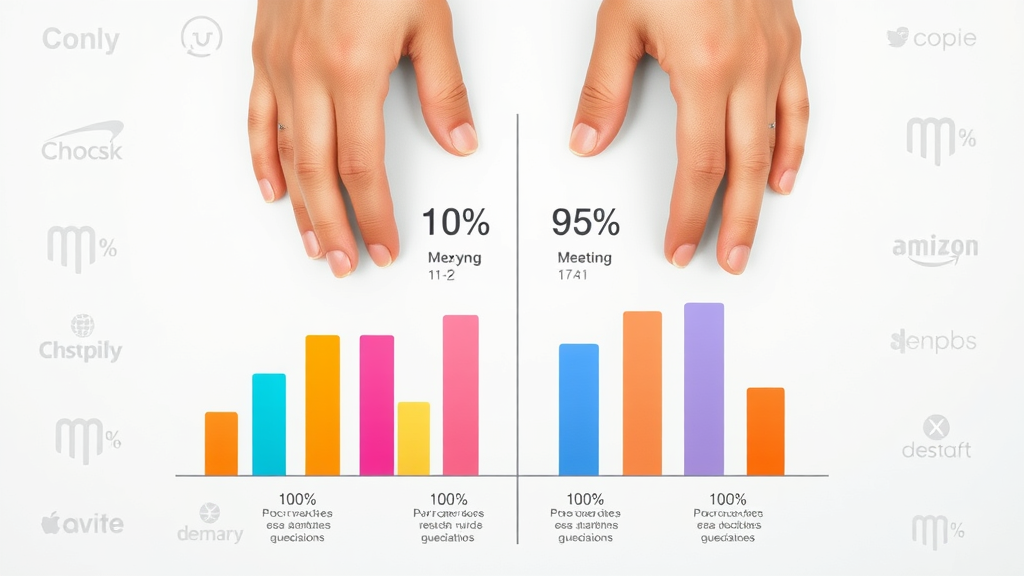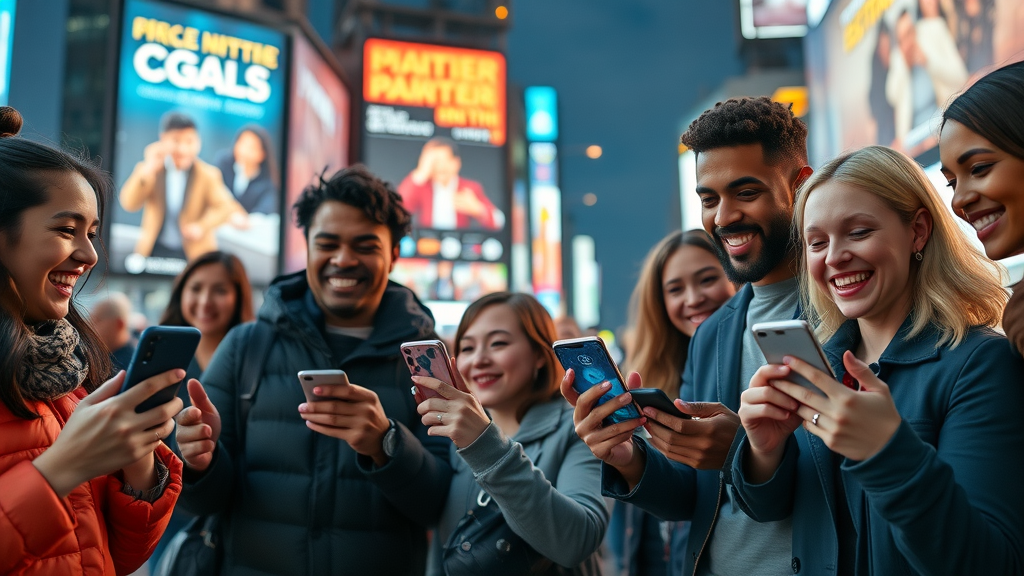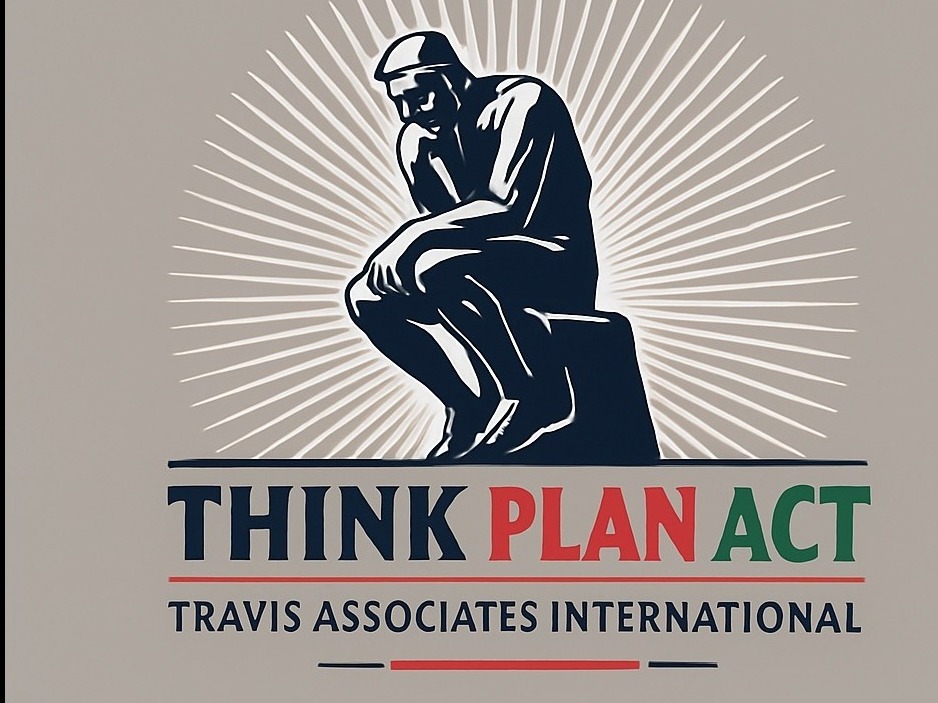Did you know? Most businesses aim to boost brand awareness , but very few actually have reliable tactics in place to measure their brand’s recognition or recall. In a world cluttered with brands vying for attention, the difference between being top-of-mind and being forgotten comes down to actionable strategy. This guide pulls back the curtain on proven, data-driven brand awareness hacks—so you can finally build a strong brand that stands out and wins trust with your target audience .

Discover How to Increase Brand Awareness: Surprising Insights and Actionable Examples
If you’re searching for ways to increase brand awareness and leave a lasting impression on potential customers, you’re not alone. Many brands invest heavily in marketing, yet struggle to see a measurable impact on how consumers perceive them. Brand awareness goes beyond simple logo recognition. It’s about ensuring your brand or product is easily recognized, remembered, and discussed in the right circles—especially when purchase decisions are on the line.
For example, Nike’s “Just Do It” campaign doesn’t just advertise shoes: it continuously fuels a powerful, emotion-driven brand image that’s instantly recognized worldwide. Similarly, smaller brands can harness social media trends, viral content, or community engagement to build awareness and trust. The key? Be where your audience is—whether on social media , through content marketing , or creative event sponsorships—and offer genuine value that resonates with their needs.
"Did you know that 89% of marketers say brand awareness is their top goal, but only 24% have a measurable strategy in place?"—Forbes

Unlock the Power of Brand Awareness: Why It Matters for Growing Any Business
Brand awareness is important for companies of all sizes. It’s the driving force that shapes how customers perceive you—and whether they choose you over your competitors. When your brand recognition is high, your name becomes synonymous with trust, quality, and reliability. This is why top brands, from giants like Apple to rising startups, invest heavily in building brand awareness across every touchpoint.
With strong brand awareness , your marketing dollars stretch further. Audiences become familiar with your brand, which generates word-of-mouth referrals, organic online mentions, and repeat business. It’s a powerful loop: the more people know and trust your brand, the easier it is to grow—fueling sustainable success in a crowded marketplace.
- Gain instant trust and credibility through brand awareness
- Achieve higher brand recognition across target audiences
- Increase brand recall in crowded marketplaces
- Fuel long-term sustainable business growth
- Unlock cost efficiencies in every marketing campaign
| Strategy | Core Metric | Brand Impact | Required Investment |
|---|---|---|---|
| Social Media Marketing | Followers, engagement rate, reach | Fast audience growth, immediate feedback | Low to Moderate |
| Content Marketing (Blogs, Video) | Shares, backlinks, time-on-page | Long-term authority, organic search boost | Moderate to High |
| Influencer & Media Marketing | Referral traffic, campaign reach | Trust by association, viral spread | Moderate to High |
| Event Sponsorships & Partnerships | Brand mentions, event attendance | Regional/niche authority, targeted exposure | High |
| User-Generated Content Campaigns | Mentions, brand hashtags | Authentic advocacy, community building | Low |

What is Brand Awareness? Definitions and Importance Explained
Brand awareness is the degree to which consumers recognize and remember your brand when faced with a decision. It’s more than just knowing your logo: it’s a measure of familiarity, emotional connection, and mental association with your brand’s core values. A high level of brand awareness means customers not only recognize your brand or product , but also understand what sets you apart in the marketplace.
For many companies, establishing brand awareness is the first step on the road to long-term customer loyalty and sustainable growth. When your target audience becomes aware of your brand’s message and mission, they’re more likely to engage with your products and services, advocate for your brand, and develop lasting relationships that benefit your business through repeat sales and referrals.
The Four Stages of Brand Awareness: From Zero to Strong Brand Presence
Building brand awareness unfolds in clear stages. The journey typically starts with brand recognition , where customers first encounter your name, logo, or message—often through advertising, product packaging, or online content. If your branding stands out, this recognition slowly evolves into brand recall , where customers can retrieve your brand from memory when discussing its category or benefits.
Over time, invested brands move on to top-of-mind awareness , the stage where your brand is the first one customers think of in your niche. Achieving the final phase, brand loyalty , means customers consistently choose you over all other options. By mastering each step, you set the stage for a strong brand identity that withstands competition and market fluctuations.
"Building brand awareness is not a short-term tactic, but a long-term investment in your business’s future."—Marketing Week

Effective Ways to Build Brand Awareness in 2024
The strategies for building brand awareness are evolving rapidly. In 2024, successful brands are those that blend time-tested wisdom with innovative, digital-first marketing tactics. Whether you manage a startup or a global brand, the following approaches can help you increase brand awareness , deepen brand recognition , and fill your sales funnel with loyal, engaged customers—no matter your industry.
From leveraging authentic conversations on social media to crafting compelling video stories, joining forces with rethinkers in your field, or analyzing your brand’s real-time data using modern analytics, each method has the power to transform strangers into super-fans. Let’s explore what works best for brands looking to lead in the digital age.
Leverage Social Media for Brand Awareness and Recognition
Social media marketing is a must-have strategy for increasing brand awareness in 2024. Platforms like Instagram, LinkedIn, and TikTok offer unprecedented reach and targeted advertising, making it easier than ever to get your brand or product in front of the right people. The best social media campaigns tap into viral trends, use creative storytelling, and encourage audience participation—ensuring your brand stays top of mind .
Social listening is another powerful tool. By monitoring online conversations with tools like Sprout Social, you gain actionable insights into customer sentiment, unmet needs, and the evolving language of your industry. Ultimately, social media empowers brands to build credibility, respond quickly to feedback, and create an ongoing dialogue that fortifies brand perception .
- Social media marketing trends for increasing brand awareness
- Social listening: How it builds brand trust and reputation
- Strategies for boosting brand recall with engaging content

Maximize Content Marketing to Build Brand Awareness
Content marketing is the secret engine behind lasting brand awareness . Regularly publishing insightful blog posts, helpful guides, and thought-provoking articles can position your company as an industry leader and resource. Experiment with different content formats—such as articles, videos, infographics, and podcasts—to give your target audience multiple ways to discover and remember your brand.
Video content, in particular, is quickly becoming the gold standard. Short, shareable videos are prime for social platforms and can dramatically boost brand recall . Partnering with influencers or launching a branded podcast can broaden your audience, tap into new communities, and enhance your reputation as a thought leader in your space.
- Blogging strategies that increase brand recognition
- Using video content to build brand recall
- Podcasting and influencer partnerships for media marketing

Launch Strategic Partnerships to Accelerate Brand Awareness
Strategic collaborations are potent growth accelerators for building brand awareness . Working with complementary brands, co-hosting events, or supporting meaningful causes extends your reach and lends your brand added credibility. When businesses unite for shared goals, they tap into each other’s target audience —building trust through association.
Co-marketing campaigns, product bundles, or event sponsorships can result in a surge of brand recognition and credibility in specific niches. Strong partnerships not only expand your exposure but also communicate your values, fostering an environment where long-term customer loyalty can flourish.
- Collaborations for building brand trust
- Co-marketing campaigns to increase brand visibility
- Event sponsorships that enhance strong brand awareness
Brand Recognition vs. Brand Recall: Mastering the Distinctions to Build Brand Awareness
Understanding the nuances between brand recognition and brand recall is crucial. While these terms are sometimes used interchangeably, mastering their distinctions will help you design smarter, more effective brand awareness campaigns.
Brand recognition is the ability of consumers to identify your brand when they see or hear it, while brand recall measures if your brand comes to mind unprompted during relevant decisions. Focusing on both increases your chances of being the first choice—turning fleeting recognition into long-term customer loyalty .
| Feature | Brand Recognition | Brand Recall |
|---|---|---|
| Definition | Identifying a brand when you see its logo/message | Recalling a brand without any visual cue |
| Example | Seeing a swoosh and knowing it’s Nike | Asked to name a sportswear company: you say “Nike” |
| Brand Impact | First impressions, shelf visibility | Top-of-mind during purchase decisions |
| Strategies | Consistent visuals, distinctive design | Memorable campaigns, emotional storytelling |
| Measurement | Logo tests, prompted surveys | Unprompted brand recall surveys |

Brand Recognition: Driving First Impressions
Brand recognition is the cornerstone of every successful brand. It’s often the initial, split-second interaction your target audience has with your business. Think of seeing the golden arches or a can of Coca-Cola—these logos instantly communicate trust, familiarity, and a set of expectations to consumers.
Brands that invest in consistent visuals, memorable packaging, and distinctive color palettes see far higher brand recognition rates. This is why companies carefully control their branding assets, invest in design upgrades, and ensure that every marketing campaign reinforces their image at every possible touchpoint.
Brand Recall: Ensuring You’re Top of Mind
Brand recall goes a step further, measuring whether consumers can spontaneously retrieve your brand name when prompted by a need or problem in your category. True mastery of brand awareness ensures you’re not only recognized, but also remembered as the go-to solution—no reminders needed.
Top brands nurture brand recall through memorable advertising, unique storytelling, and regular customer engagement. When your name comes up first during purchase deliberation, you own the so-called “zero moment of truth”—giving your business an unbeatable competitive edge.
"The more you are remembered, the more your brand influences buying behavior."—Harvard Business Review

Measuring and Optimizing Your Brand Awareness Efforts
Without proper measurement, you’ll never know if your brand awareness efforts are moving the needle. Leading brands rely on a mix of quantitative and qualitative metrics to track recognition and brand recall over time. These include share of voice, website traffic, social mentions, survey results, and engagement analytics.
Using tools such as Google Analytics, Sprout Social, or bespoke audience surveys, you can monitor spikes in awareness after each major marketing campaign. If the data reveals underperformance, you can adjust strategies in real time—whether by refreshing your content, experimenting with new platforms, or amplifying influencer collaborations.
- Metrics that reveal your true brand awareness
- Tools to track increases in brand recognition and recall
- Improving your brand awareness strategy through analytics

Case Study: Companies Who Successfully Increased Brand Awareness
Consider Airbnb, which redefined itself through an iconic “Belong Anywhere” campaign that connected with travelers emotionally. By leveraging both social media and influencer partnerships, they vaulted from a niche rental service to global thought leader in travel accommodation. Consistent content, powerful visuals, and a unique value proposition fueled this seismic shift in brand recognition .
Smaller brands can also learn from fitness apparel company Gymshark, which bootstrapped their growth using fitness influencer collaborations and viral blog posts. Today, they’re a staple for young, active consumers—proving that with the right focus, any business can build brand awareness and dominate their category.
Common Brand Awareness Mistakes and How to Avoid Them
One of the biggest mistakes brands make is relying solely on paid ads without supporting them with organic engagement strategies. This approach usually creates short-term spikes in visibility, but fails to drive lasting brand recall . Another common misstep is inconsistency: mismatched messaging or visuals across platforms can confuse your target audience and erode trust.
Avoid overlooking analytics—it’s crucial to measure, test, and optimize continually. And finally, never ignore direct feedback from loyal customers or miss out on co-marketing opportunities that can supercharge your reach. The best brands learn, adapt, and refine their approach with each marketing campaign.
Actionable Brand Awareness Hacks That Actually Work
- Run interactive social media campaigns
- Launch referral and loyalty programs for brand recognition
- Use user-generated content to build brand awareness
- Create memorable brand touchpoints across all channels
- Engage in social listening for immediate feedback

Building a Strong Brand Awareness Foundation: Dos and Don'ts
To build a strong brand awareness foundation , start with clear, consistent messaging and visuals on every channel—this ensures every encounter with your business reinforces a cohesive brand image . Foster trust by delivering on promises and turning customers into advocates; empower employees to act as ambassadors for your brand or product .
Continuously innovate your approach to stay relevant—stale strategies leave even the most beloved brands behind. Above all, listen and adapt: feedback from your target audience is gold. By mastering these principles, you’ll future-proof your brand against the ever-changing market.
- Maintain consistent messaging and visuals
- Foster trust to build a strong brand identity
- Empower employees as brand ambassadors
- Keep innovating your brand awareness tactics
People Also Ask: Everything You Need to Know About Brand Awareness
What do you mean by brand awareness?
Brand awareness means being easily recognized and recalled by your target audience. It is the extent to which consumers are familiar with your brand, what it stands for, and how it stands out from competitors.
What are the 4 stages of brand awareness?
The four stages include: 1) Brand Recognition, 2) Brand Recall, 3) Top-of-Mind Awareness, and 4) Brand Loyalty. Each stage builds your brand awareness and strengthens your overall brand equity.
What are the three types of brand awareness?
The three types are brand recognition, brand recall, and top-of-mind awareness. Mastering these helps you increase brand awareness effectively.
Why is having brand awareness important?
Brand awareness is important because it ensures your brand is considered first during purchase decisions, boosts trust, and creates lasting customer loyalty.
Expert Tips: Building Brand Awareness for a Strong Brand Identity
- Identify your unique value proposition for stronger brand recognition
- Develop a memorable brand story
- Use consistent branding across all marketing channels
- Prioritize customer experiences to increase brand loyalty

Frequently Asked Questions
- How can I measure brand awareness effectively? Use a combination of metrics, such as web traffic, social mentions, unique branded searches, customer surveys, and unprompted brand recall tests to gauge true recognition and sentiment.
- What low-budget tactics help build brand awareness fast? Try user-generated content campaigns, interactive polls on social media, strategic partnerships, and participating in relevant online communities to grow recognition with minimal spend.
- How often should I analyze my brand awareness campaign results? Analyze your results at least monthly for digital campaigns, and quarterly for offline strategies. Adjust your tactics regularly to stay top of mind with your audience.
- Which social media platforms work best for increasing brand awareness? Platforms like Instagram, TikTok, and LinkedIn are highly effective for visual storytelling and niche targeting, but the best platform always depends on where your target audience is most active.
- What mistakes do brands make when building awareness? Common pitfalls include inconsistent branding, ignoring analytics, failing to differentiate from competitors, and neglecting direct engagement with your audience.
Supercharge Your Brand Awareness Today—Unlock Lasting Results
"A strong brand awareness strategy is the cornerstone of every market leader."—Branding Expert, Jane Smith
Take bold steps, iterate, and never underestimate the long-term value of building brand awareness for business success.
Ready to Increase Brand Awareness? Contact Our Experts
Let's have a chat, call 908-641-9211 to discuss how you can build brand awareness and unlock your business potential.
To further enhance your understanding of effective brand awareness strategies, consider exploring the following resources:
-
“8 Ways to Boost Brand Awareness” : This article outlines practical strategies such as co-marketing activities, influencer marketing, and employee advocacy programs to elevate your brand’s visibility. ( haiilo.com )
-
“How to Improve Brand Awareness: 11 Expert Tips” : This piece offers insights into maximizing social media efforts, running targeted ads, and embracing corporate social responsibility to strengthen brand recognition. ( hawksem.com )
These resources provide actionable strategies and real-world examples to help you build a strong and recognizable brand presence.
 Add Row
Add Row  Add
Add 




Write A Comment